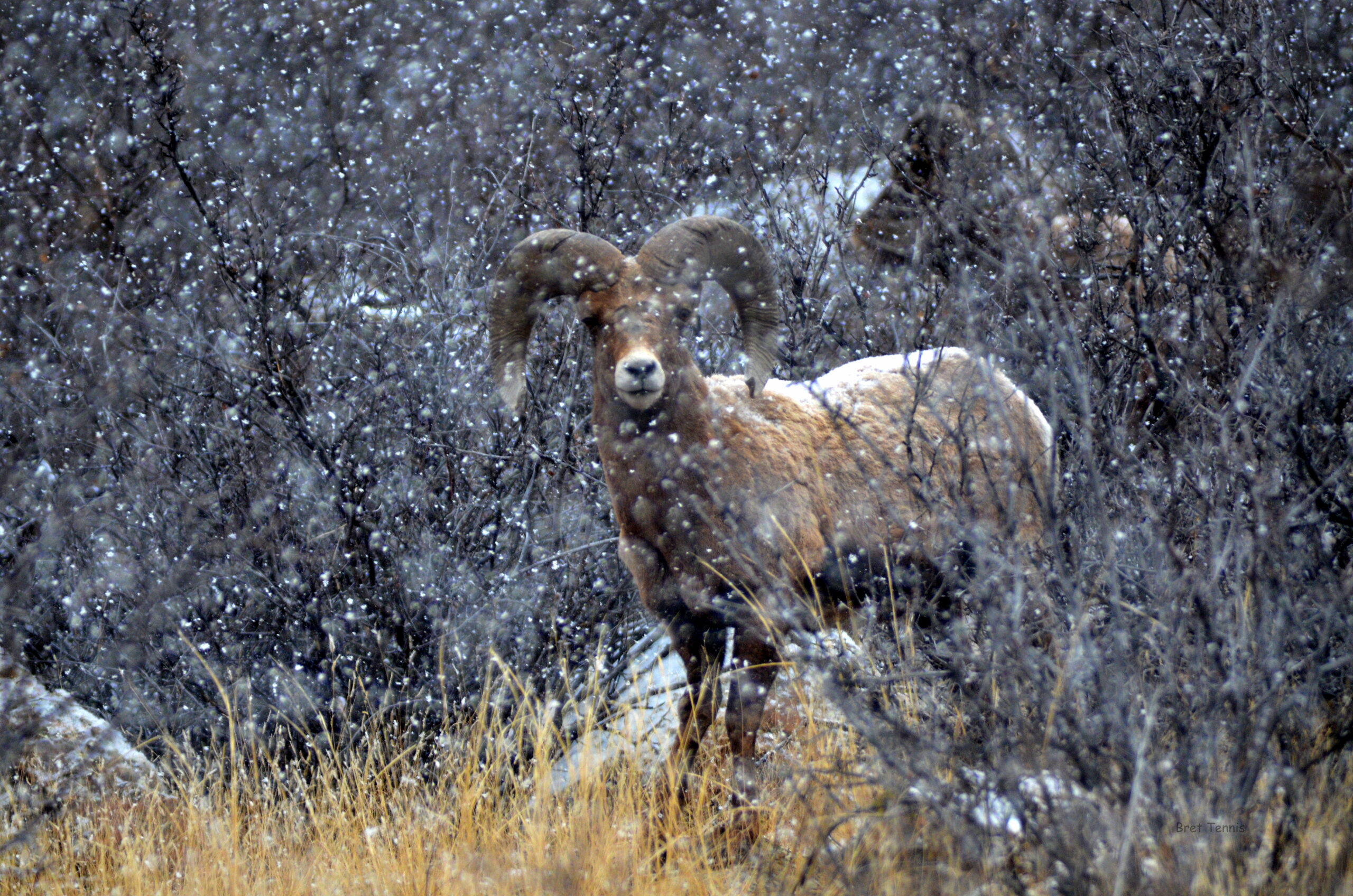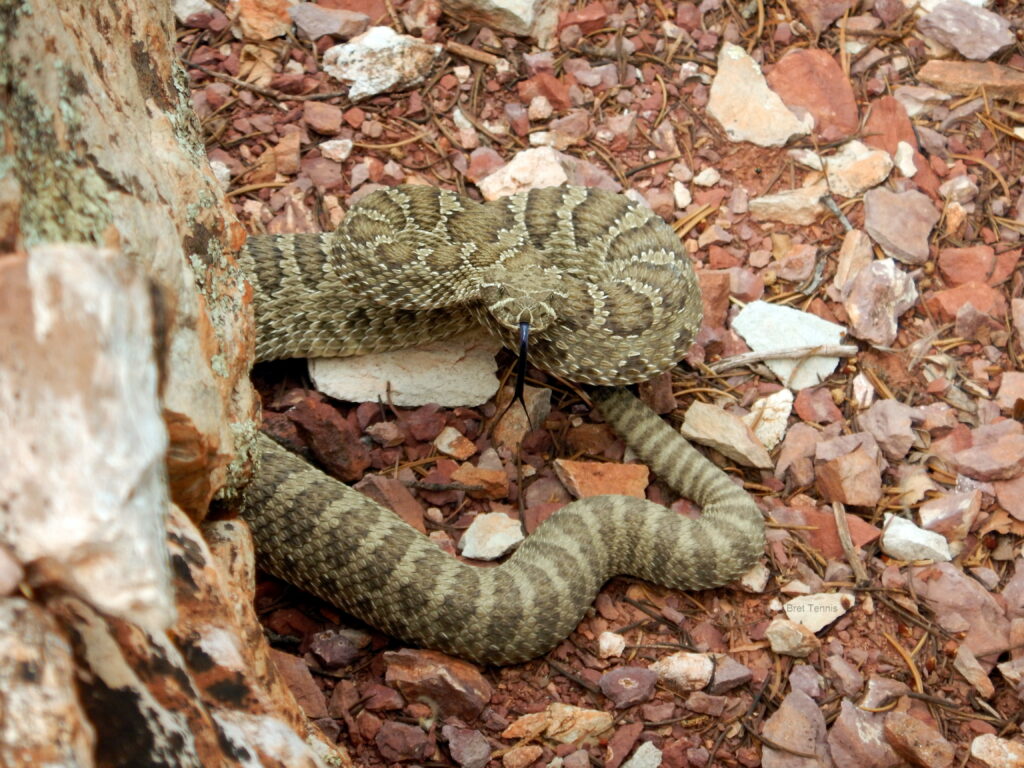Snowbirds & Snoozers: The Secret Winter Lives of Animals
by Asya L. Simons, Park Guide & School Programs Coordinator, Garden of the Gods Park

Brrrrr – it’s officially sweater weather in the Garden! I finally pulled out my fuzzy socks, bought an ice scraper for my car, and have stocked up on hot chocolate packets. As someone who hasn’t seen snow in almost a decade, I’m bracing myself for the coming months – with only mild panic and several preparation trips to REI. Layers, right?
Unfortunately, the animals in the Garden don’t have an REI membership – so how will they stay warm this winter?
Snakes, who for most of the year are anti-social, will spend the winter in caves or underground dens where the temperatures stay relatively stable year-round (think of the last time you visited Cave of the Winds – in the summer the cave is cooler than the outside, and in the winter the cave is warmer!). While living in these dens rattlesnakes slow their metabolism in a process similar to hibernation called brumation, which allows them to go several months without eating.

From watching your step to watching the skies, another iconic species in the Garden is the white-throated swift. In the summer our skies can fill with hundreds of these small black and white birds dipping and diving as they chase insects. But come October the birds all – disappear? Early scientists believed that birds hibernated at the bottom of lakes, flew to the moon, or even shapeshifted into different species for the winter months. Today, of course, these theories sound ridiculous, and we know that some birds migrate to warmer climates in search of better weather and more abundant food. White-throated swifts, for example, travel as far south as Honduras during the deep winter and return to Colorado (and as far north as Canada) in March.
Brumating or flying south sounds fantastic, but what about our mammalian relatives? It turns out some mammals follow that key rule of dressing in layers – without the REI price tags. Rocky Mountain Bighorn Sheep, our state mammal and a lucky spot for some Garden visitors, grow a thick, double-layered coat to keep them warm. Also similar to my transition from iced coffee to hot chocolate, bighorn sheep will alter their diet and eat more woody plants, as opposed to summer grasses (although this is likely due to accessibility in the winter rather than preference).
